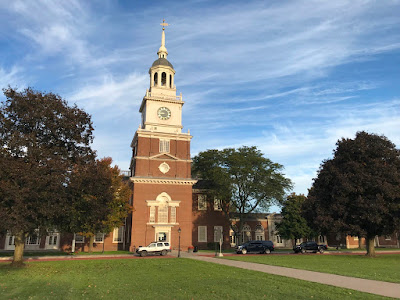The front of the Henry Ford Museum of American Innovation in Dearborn, Michigan (photo above) is an exact replica of Independence Hall in Philadelphia. We visited "The Henry Ford" today. It was fantastic.
There are two main parts to The Henry Ford: the indoor 12-acre museum (above) and the outdoor 250-acre Greenfield Village adjacent to the museum.
Henry Ford originally called his museum and village the Edison Institute in honor of his friend, Thomas Edison. On October 21, 1929, Ford held a gala reception with Edison as the guest of honor. Attendees included President Herbert Hoover, John D. Rockefeller, George Eastman, Will Rogers, Orville Wright, Marie Curie, and many other prominent people of the day. Albert Einstein was scheduled to attend, but didn't make it. The date was the 50th anniversary of Edison's invention of a workable incandescent lamp.
The photo below is the main entrance hall to the museum, behind the doors of the entrance pictured above:
In the foreground is a shovel stuck into a block of concrete. What is that all about? Henry Ford began building the museum in 1928:
On September 27 of that year, Ford watched as his hero Thomas Edison thrust agriculturist Luther Burbank's spade into a wet concrete block, then inscribed his own signature into the concrete. To Ford, this act symbolized the union of agriculture and industry – cornerstones of America's economy and a key principle Ford wished to illustrate in his museum. [source, p. 15]
Follow these links for highlights of our visit today:
- the Museum, 12 acres indoors, open year-round
- the Village, 250 acres outdoors, closed in winter
At the time we visited The Henry Ford, there was a special exhibit that we especially enjoyed. The photo below shows the entrance to this exhibit – Enduring Ideals: Rockwell, Roosevelt & the Four Freedoms.
I will write about that exhibit separately on my other blog, The Switchel Philosopher.
UPDATE 1/03/19: See the following posts on my other blog, The Switchel Philosopher, about the "Enduring Ideals" special exhibit: Roosevelt's Four Freedoms, Rockwell's Four Freedoms, Freedom of Speech Painting, Legacy of the Four Freedoms.



No comments:
Post a Comment